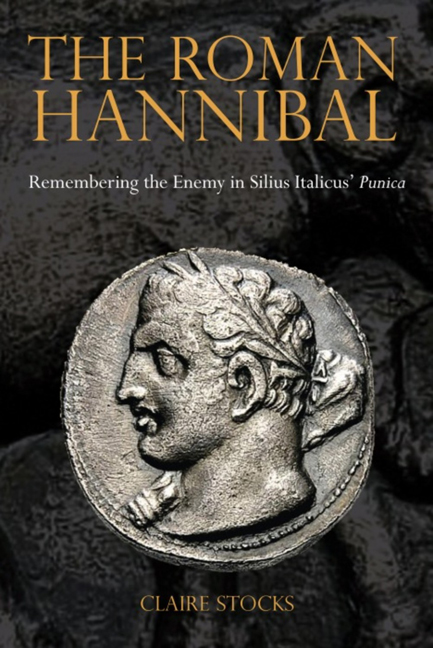Book contents
- Frontmatter
- Contents
- Acknowledgements
- Texts and Translations Used
- Introduction: Silius Italicus and the Roman Hannibal
- Chapter One The Roman Hannibal Defined
- Chapter Two Before Silius: The Creation of the Roman Hannibal
- Chapter Three Silius' Influences
- Chapter Four Epic Models
- Chapter Five Silius' Roman Hannibal
- Chapter Six Out of the Darkness and into the Light
- Chapter Seven Hannibal's Decline after Cannae: Separating Man from Myth
- Chapter Eight Imitators and Innovators
- Chapter Nine Band of Brothers
- Chapter Ten The ‘Lightning Bolts’ (Fulmina) of War
- Chapter Eleven The Man and his Myth: The Self-Defined Roman Hannibal
- Conclusion: The Crossing of the Worlds: The Move from Internal to External Narrative
- Bibliography
- General Index
- Index locorum
Chapter Six - Out of the Darkness and into the Light
- Frontmatter
- Contents
- Acknowledgements
- Texts and Translations Used
- Introduction: Silius Italicus and the Roman Hannibal
- Chapter One The Roman Hannibal Defined
- Chapter Two Before Silius: The Creation of the Roman Hannibal
- Chapter Three Silius' Influences
- Chapter Four Epic Models
- Chapter Five Silius' Roman Hannibal
- Chapter Six Out of the Darkness and into the Light
- Chapter Seven Hannibal's Decline after Cannae: Separating Man from Myth
- Chapter Eight Imitators and Innovators
- Chapter Nine Band of Brothers
- Chapter Ten The ‘Lightning Bolts’ (Fulmina) of War
- Chapter Eleven The Man and his Myth: The Self-Defined Roman Hannibal
- Conclusion: The Crossing of the Worlds: The Move from Internal to External Narrative
- Bibliography
- General Index
- Index locorum
Summary
Hannibal at Saguntum
Saguntum is the first major battle sequence of the epic and provides the first sight of Silius’ Hannibal in action. Here Hannibal the man sets in motion the myth as he embraces his past literary status as a superhuman warrior and charismatic general, emerging from the darkness of his formative years (e.g. 1.99–103) to become a warrior of flame and light (e.g. 1.461–2). He stands before the walls of the city, pounded by Saguntine weapons, and makes a rallying call to his troops:
clamatque super: ‘tot milia, gentes 340 inter tela satae, iam capto stamus in hoste? nonne pudet coepti? pudet ominis? en bona uirtus primitiaeque ducis! taline implere paramus Italiam fama? tales praemittere pugnas?’
And he shouted out: 'How is it that we, so many thousands, Races
Born amid weapons, still stand before an enemy already conquered?
Is it shame for our undertaking? Shame of the omens? Behold the excellent manliness
And the first deeds of your leader! Are these the sort of rumours with which we are preparing
To fill Italy? To send ahead news of such battles before us?’
(Pun.1.340–4)This is Hannibal's first direct speech of the epic and our first insight into how he defines himself and his actions: as a man of bona uirtus (1.342) and a leader of men (dux, 1.343). The capability of Hannibal as a leader is stated early in the epic; the Carthaginian army is the first to welcome him (exercitus una/ Hannibalem uoce atque alacri certamine poscit; ‘the army demanded Hannibal with one voice, eager for battle’, 1.183–4) seeing in him the reflection of his father Hamilcar's uirtus (huic studia accendit patriae uirtutis imago, 1.185).4 They also admire his youthful eagerness, his fervour, his mind armed with tricks, and his innate way with words (huic uirides ausis anni feruorque decorus/ atque armata dolis mens et uis insita fandi, 1.187–8), all traits which define the Roman Hannibal as he appears in earlier texts. These Carthaginian troops, therefore, are presenting a version of Hannibal that is instantly recognisable to the external audience, presenting him as a man gifted in speech even though he is yet to utter one word.
- Type
- Chapter
- Information
- The Roman HannibalRemembering the Enemy in Silius Italicus’ Punica, pp. 103 - 132Publisher: Liverpool University PressPrint publication year: 2014

